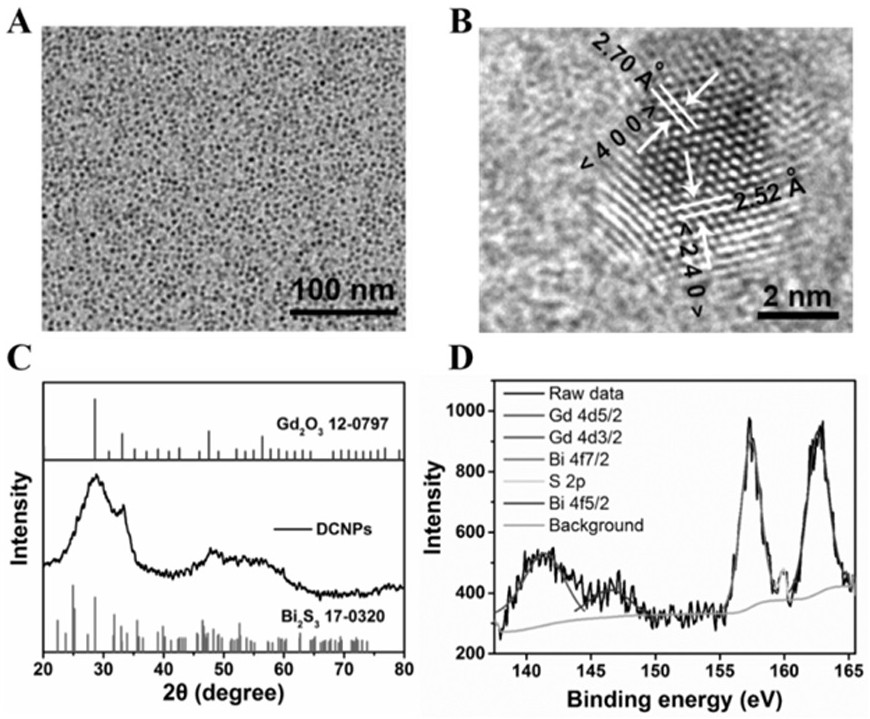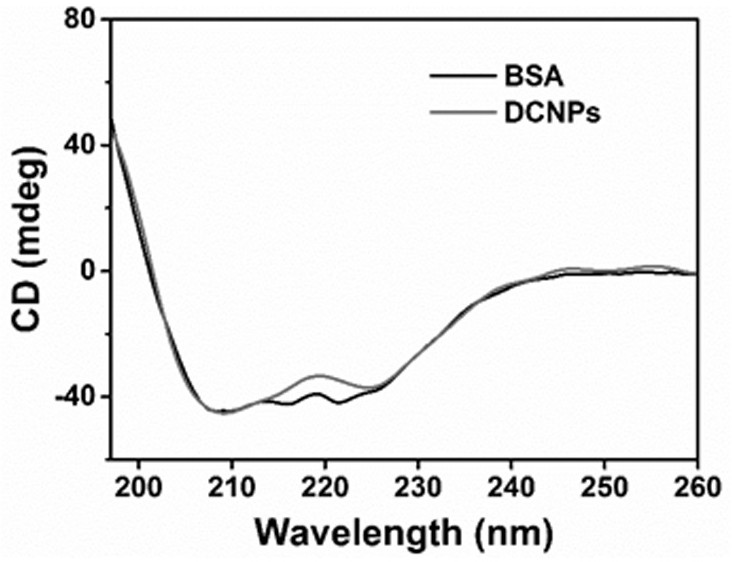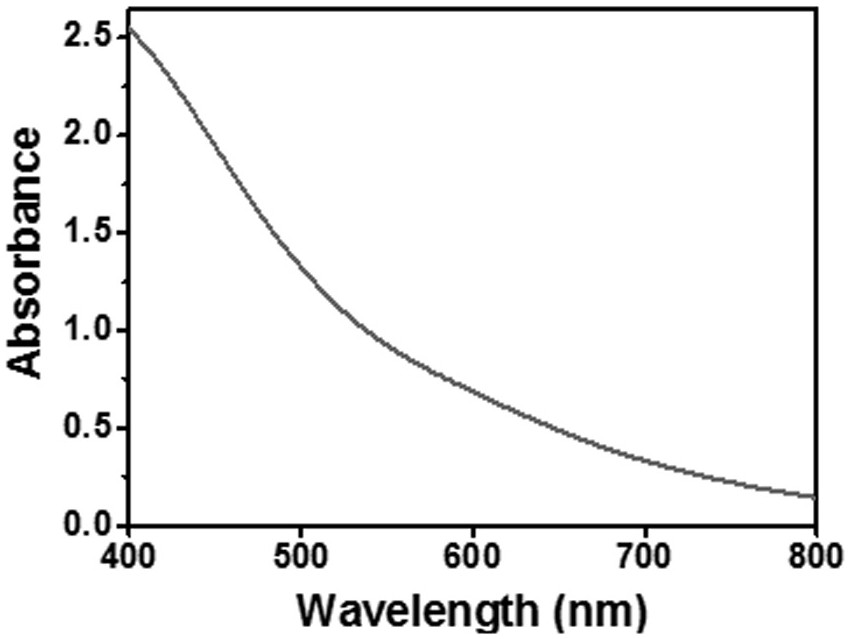Ultra-small protein composite nanoparticles with near-infrared photothermal effect and multimodal imaging functions, its preparation method and application
A multi-modal imaging, near-infrared light technology, applied in medical preparations containing active ingredients, echo/ultrasonic imaging agents, preparations for in vivo experiments, etc., can solve the problem of insufficient diagnosis or treatment performance, poor soft tissue contrast , angiography failure and other problems, to achieve the effect of low cost, small dose, strong X-ray attenuation ability
- Summary
- Abstract
- Description
- Claims
- Application Information
AI Technical Summary
Problems solved by technology
Method used
Image
Examples
Embodiment 1
[0046] 1. Preparation of albumin composite nanoparticles:
[0047] First prepare 50 mg·mL -1 Bovine serum albumin solution 10 mL, then add 2 mL Bi(NO 3 ) 3 ·5H 2 O (20 mmol·L -1 ), 2 mL GdCl 3 ·6H 2 O (20 mmol·L -1 ). The reaction system was then adjusted to pH 12 with 2 M NaOH to obtain a mixture solution. Finally, the mixture solution was placed in a 37 °C water bath and heated for 12 h. After the reaction time is up, place the reaction solution in a dialysis bag with a molecular weight cut-off of 8000-14000 KD, dialyze with pure water for 24 h to remove small molecular impurities in the reaction, and then filter the reaction solution with an ultrafiltration centrifuge tube at 3000 r min -1 Centrifuge for 15 min, wash with water for 10 times, and then centrifuge and concentrate to obtain the purified product, which is protein composite nanoparticles with near-infrared photothermal effect and multimodal imaging function, referred to as nanoparticles or DCNPs.
[00...
Embodiment 2
[0091] When preparing albumin composite nanoparticles in Example 1, adjust the bovine serum albumin concentration to 10, 25, 75, 100 mg·mL -1 , the other steps are the same as in Example 1, and albumin composite nanoparticles with better stability can be obtained. The particle size of the albumin composite nanoparticles prepared by this method is measured at 25°C with a laser particle size analyzer. 0.5 mmol·L -1 aqueous solution under laser light (785 nm, 1.5 W cm -2 ) after 300 s of irradiation, the temperature can be increased by 30°C, 31°C, 31°C, and 31°C, respectively; the photothermal conversion efficiencies are 41.98%, 42.03%, 41.87%, and 40.16%, respectively; all of them can be used for multi-modal imaging.
Embodiment 3
[0093] Adjust the reaction system to pH 8, 10, and 13 during the preparation of albumin composite nanoparticles in Example 1, and the other steps are the same as in Example 1; as the pH of the aqueous phase in the reaction system increases, the albumin composite nanoparticles can be adjusted. The intensity of absorption in the near-infrared region of 800-1200 nm can produce albumin composite nanoparticles with better stability. The particle size of albumin composite nanoparticles prepared by this method is measured at 25 ℃ with a laser particle size analyzer. About, bismuth element content is 0.5 mmol L -1 aqueous solution under laser light (785 nm, 1.5 W cm -2 ) after irradiating for 300 s, the temperature can be increased by 30 ℃, 30 ℃ and 31 ℃ respectively; the photothermal conversion efficiency is 42.18%, 42.33% and 42.37% respectively; all of them can be used for multi-modal imaging.
PUM
| Property | Measurement | Unit |
|---|---|---|
| diameter | aaaaa | aaaaa |
| concentration | aaaaa | aaaaa |
| particle diameter | aaaaa | aaaaa |
Abstract
Description
Claims
Application Information
 Login to View More
Login to View More - R&D
- Intellectual Property
- Life Sciences
- Materials
- Tech Scout
- Unparalleled Data Quality
- Higher Quality Content
- 60% Fewer Hallucinations
Browse by: Latest US Patents, China's latest patents, Technical Efficacy Thesaurus, Application Domain, Technology Topic, Popular Technical Reports.
© 2025 PatSnap. All rights reserved.Legal|Privacy policy|Modern Slavery Act Transparency Statement|Sitemap|About US| Contact US: help@patsnap.com



